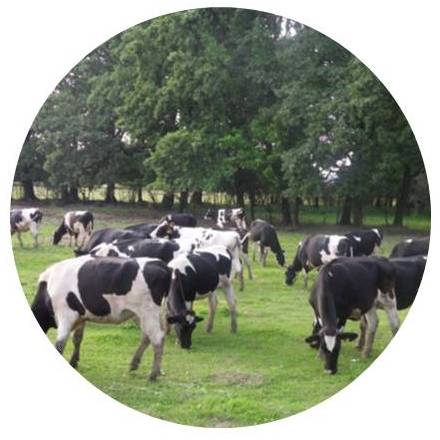Films from the Plenary Sessions will be available soon on the EAAPwebsite www.eaap.org ONLY for EAAP Individual Members
Information how to apply to become an Individual Member is available here
PDF presentations and book of abstracts are available here
AGRICULTURE IN POLAND
Poland is an important European and global producer of a number of agricultural and horticultural products as well as products of animal origin. The surface area of agricultural land in Poland is 15.4 million ha, which constitutes nearly 50% of the total area of the country. The rural area is inhabited by more than 9 million people. Agricultural production conditions differ in Poland, especially as compared to EU agriculture. The number of private farms exceeds 2 million. Most of them have relatively small areas - 9 ha on average. Considerable part of farmers applies traditional production methods, where products are only for farmer's own family. Animal breeding is usually carried out with small intensity, which contributes to the protection of the natural environment. However, simultaneously, there are more and more big market-oriented agricultural holdings, including those specialising in production for export.
Despite a significant dispersion of agricultural holdings and the prevalence of soils with low usefulness, Poland is an important European and global producer of agricultural and horticultural products, as well as products of animal origin. The most important crops are grains, of which the highest yields came from rye, wheat, barley, and oats. Other major crops are potatoes, sugar beets, fodder crops, flax, hops, tobacco, and fruits. Farms all over Poland raise dairy cows, beef cattle, pigs, poultry, and cultivate fruit.
Animal Production
Animal production involves predominantly dairy, pig and poultry products. Poland has also a strong tradition of horse breeding, especially purebred Arabian horses. The conservation of animal resources is one of the most important issues.
A cattle breeding is concentrated mainly in north-eastern and central Poland, whereas most pigs are bred in central and northern part of the country. Sheep population is very small and located only in the mountainous regions.
In 2013, the cattle population in Poland amounted to 5 595 thousand and the total milk production exceeded 12 million tons, despite the prevailing falling trend in the number of cows. Milk production is one of the most important sectors of agricultural production. The 2013 value of industrially produced milk exceeded PLN 12 billion and accounted for about over 20% of overall value of agricultural commodity production. Progressive concentration and specialization of this sector affect the annual increase of industrial milk production and decrease of the number of milk producers and entities buying in milk.
Poland is an important meat producer in the European Union. In recent years, it ranked fourth in terms of the production of both pork meat as well as of poultry, and it was the seventh largest producer of beef. The production of poultry meat has been growing by a few per cent year by year. Over 93% of meat within the structure of poultry market production comes from broilers and turkeys.
The egg production amounts to 8% of the total quantity produced in EU which makes Poland the sixth greatest producer. The domestic production of chicken eggs exceeded 10 billion of which over 30% was exported.
Last year's per capita consumption of milk was 193 kg and the consumption of total meat about 67 kg. In the consumption of meat pork accounted for the biggest share (about 40 kg), followed by poultry (25.0 kg), while the share of beef was the smallest one (1.6 kg ), which to a large extent depended on the income of the population.
In the recent years the rapid development of organic farming in Poland is observed. Also, the sector of regional and traditional food increases quite dynamically and more and more producers want to produce quality foods. Dispersion of farms and low amount of chemical fertilizers used makes our agriculture naturally fit for the production of quality foods, organic and natural products – which is very much sought after by the European consumers.
